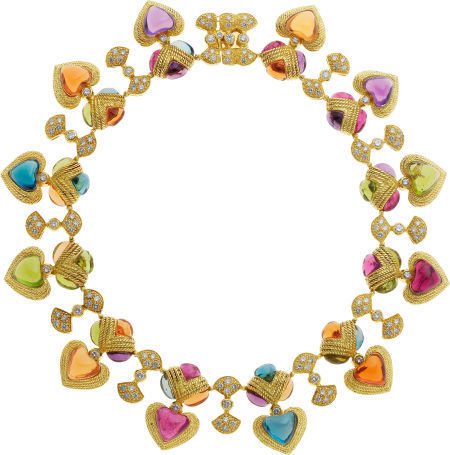![431N09006_6ZRG6]()
Francis Bacon, 'Figure Writing, Reflected in a Mirror. The Writer', 1976, lithograph in colours, signed in pencil, image: 85 x 64 cm. From William Weston Gallery.
LONDON.- The 20/21 British Art Fair, the only fair which specialises exclusively in British art will take place from 11 – 15 September at the Royal College of Art, Kensington Gore, London SW7. It will be opened at 5pm on the 11th by Hattie Morahan, the prize winning actress, who plays Laura Knight in the recent film ‘Summer in February’ about the life of Sir Alfred Munnings and who has just opened to great acclaim in The Doll’s House in the West End.
The fair is a pivotal date for collectors of British art and continues to attract an enviably loyal following in London’s busy art fair calendar. Its success over 26 years has spawned many rivals but none have the same exclusive focus. Its particular strengths lie in the excellence and range of Modern (1900-1945) and Post-War art (1945 – 1970) on show, however, the fair also has a wide selection of contemporary art (1970 onwards).
Each year the 56 exhibitors bring to their stands a great variety of work, much of which has been kept back especially for the fair. The result is a niche event that annually showcases a truly eclectic selection of paintings, prints, drawings, sculpture and, new this year, a stand dedicated to photography.
The Royal College of Art is an ideal setting for the fair and is often called ‘the spiritual home’ of British art. On offer will be work by most of the leading names in 20th century British art alongside a selection of contemporary work, for example: Edward Burra, Elisabeth Frink, Patrick Heron, David Hockney, Howard Hodgkin, Peter Lanyon, Henry Moore, John Piper, Bridget Riley, Graham Sutherland and Keith Vaughan.
The high regard in which many of these artists is held is shown by the exhibitions at the major public galleries: portraits by Dame Laura Knight and sculpture by Jacob Epstein are currently at the National Portrait Gallery. Patrick Caulfield is at Tate Britain as is the first large retrospective of the work of LS Lowry whilst the Dulwich Picture Gallery features ‘A Crisis of Brilliance 1908-22’ highlighting those Slade artists caught up in the first World War. Also of special interest this year will be the work of William Scott in the centenary year of his birth and he will feature at Tate St. Ives, Bacon/Moore has also just opened at the Ashmolean in Oxford.
At the fair, the history of the 20th and early 21st century British art is represented: Vorticists, Camden Town, Scottish Colourists, Bloomsbury Group, surrealism to post-war abstraction, pop art, the YBA’s and more recent graduate work. The price range is from a few hundred up to many thousands.
‘The only art fair I make an effort not to miss is the 20/21 British Art Fair.….it is the only gathering of dealers I find really enjoyable and inspiring with a wide range of high-quality Mod Brit on show…’ ---Andrew Lambirth, The Spectator.
![432N09006_6ZRG6]()
Patrick Caulfield, 'Thus she would come, escaped, half-dead to my door', 1973, Screenprint, 40.5 x 35.5cm (image); 61 x 56cm (sheet). Signed and numbered from the edition of 100. From Gwen Hughes Modern British Art.
![433N09006_6ZRG6]()
Grayson Perry (b. 1960), 'Hold your Beliefs Lightly', tapestry embroidery, signed, 2011. Edition of 250, 32 x 45 cm. Exhibited at the British Museum in the Tomb of the Unknown Craftsman. From Dominic Guerrini
![999L13304_745L2]()
Henry Moore (1898-1986), 'Reclining Figure: Flint', 1977, Bronze, From the edition of 9. 14 x 21 x 12.5 cm. From Osborne Samuel
![999L13304_745L2_A]()
Beryl Cook OBE (1926 – 2008), 'Car Boot Sale', oil on panel, 1997, 79 x 66 cms. From Portal Painters
![565023_10151836280760435_931438289_n]()
John Hoyland (1934-2011), 'Untitled [29.7.75]', 1975, acrylic on canvas, 122 x 91.5 cm, signed and dated on the canvas overlap. From Alan Wheatley Art
![992996_10151836280640435_2060162552_n]()
Terence Donovan (1936-96), 'Julie Christie', 1962, silver gelatin print, 60 x 50 cm, edition of 50. From Beetles & Huxley
![1174664_10201382311773681_1037394658_n]()
Alison Watt (b. 1965), 'Portrait of the artist Stephen Conroy', 1987, oil on canvas, 101.5 x 56 cm. From Ewan Mundy
![1187246_10151836280645435_1795994862_n]()
William Scott (1913-89), 'Mingulay', Original gouache for the lithograph. This work is recorded in the William Scott Archive as No. 2321, 49 x 61 cm. From Osborne Samuel
![555318_10151836280720435_1539702019_n]()
Lynn Chadwick (1914-2003), 'Bird III', 1958, bronze. From the edition of 4+1 casts, 32 x 122 x 50 cm. From Osborne Samuel
![1239432_10151836280690435_1015906498_n]()
Craigie Aitchison CBE, RA, (1926-2009), 'Saint with Dog', c. 1982, oil on canvas, 61 x 50.8 cm. From Merville Galleries
![a_blue_and_white_jar_with_tigers_joseon_dynasty_d5715504h]()
John Bratby, RA (1928-92), 'Guy the Gorilla', oil on canvas, signed, 75 x 50 cm. From Manya Igel Fine Arts
![1208641_10201382319773881_1785574954_n]()
Bernard Meadows (1915-2005),'Crab', c. 1952, bronze, ed. 6, 31 cm. From Keith Chapman

























































